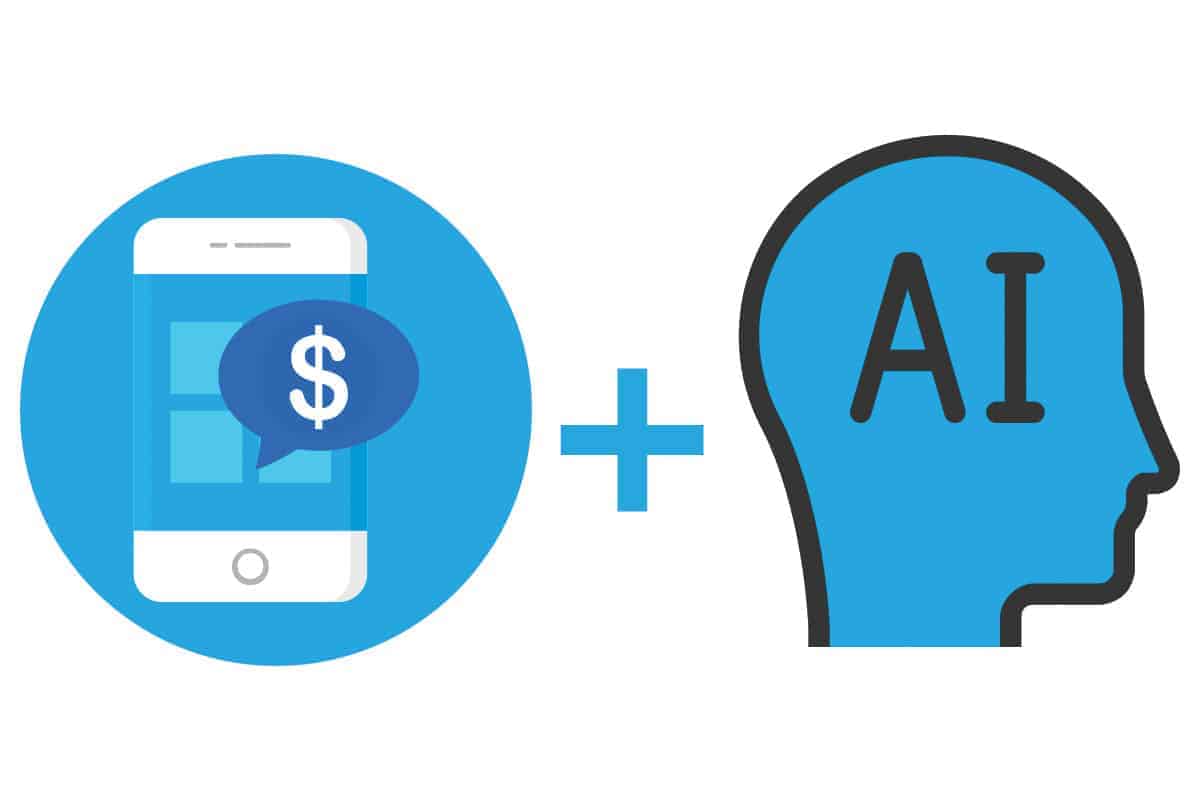Digital Innovations have transformed the way businesses operate in the modern world. While the focus remains on delivering the highest quality of services, the methods to do so are changing with time. Artificial intelligence (AI) has opened doors to new possibilities by improving the way businesses handle and process data. Every industrial business harnesses the power of AI to simplify, accelerate, and redefine traditional processes. Multiple factors make the banking industry ripe for AI solutions that can improve core banking processes.
Let’s explore the benefits of artificial intelligence and why would the banking sector need Artificial Intelligence rather than Human ?
Realizing the true potential : Importance of Artificial Intelligence in Banking Sector
IHS Markit’s AI report says the global Artificial Intelligence market would reach $300 billion by 2030
The advent of AI and its applications in the banking sector has transformed the way the industry works. Given the size of the vertical, AI has huge potential to enhance critical processes and improve their efficiency to deliver optimal customer experiences. As AI and machine learning continue to provide a wide scope of possibilities, the banking industry can profit from these next-gen technologies. Banks are on the frontline for developing the next wave of financial solutions required by depositors and borrowers.
The handling of cash, credits, and other financial transactions establishes banks as the driving force of the global economy. From helping customers to track their expenditures to providing a range of financial services, banks need to document every instance of information exchange. Since this data is critical to banking processes, handling it intelligently aids financial institutions to improve their customer experiences.
Revolutionizing The Banking Sector

Source: A November 2019 Cognizant Report
The full spectrum of AI technologies is likely to have a long-term impact on the key areas of financial services in the coming years. By utilizing the innovative capabilities of AI, financial institutions have significantly improved the way they approach their customers. Over the years, the banking sector has relied heavily on price, speed, and access to attract and retain customers. In this context, AI is creating value in customer loyalty and proving beneficial for banks and financial institutes. Advanced computing technology is gradually automating customers’ financial lives and most importantly improving their financial outcomes.
AI technologies such as predictive analytics, natural language processing (NLP), computer vision, deep learning, machine learning are enabling the financial sector to reform the traditional working processes. The wealth of information at the bank’s disposal can be used to automate simple and predictable tasks, augment the human workforce, and provide a customer-friendly experience.
Understandably, the AI phenomenon has revolutionized the banking industry. However, it must not be considered a replacement for the human workforce. Instead, banks must train and encourage their workers to use AI-based techniques to enhance their productivity by effortlessly performing their routine tasks. Although AI implementation may seem complex, banks can use simple and adaptable frameworks to avail the benefits of this disruptive technology. They can proceed by running a pilot project to test the feasibility of AI implementation and then deploy it at full scale if the pilot is successful.
Implementing various AI technologies in the banking sector
Predictive Analytics
Banks have a treasure trove of customers’ financial data that has the potential to maximize the effectiveness of their sales and revenue generation efforts. Human analysts may not be able to accurately determine the scope and potential of the stored information. AI-powered predictive analytics is now being used in many areas including financial advice, risk management and compliance, portfolio strategy, and trading and collections.
Financial Advice
Robo-advisors, as they are commonly referred to, are capable of providing customers with automated, algorithm-driven financial planning services. The underlying technology of accurately recognizing the customer’s need and risk tolerance enables them to suggest an appropriate asset allocation. These robo-advisors can automatically rebalance a client’s portfolio and even prompt a human financial advisor to call and offer financial assistance at the right time.
Hiring human financial advisors incurs significant costs for financial institutions. It is, therefore, advisable to replace them with robo-advisors to achieve higher efficiency at comparatively lower costs. The wider adoption of robo-advisors is enabling FIs to expand into a larger market and customer segments.
Risk Management & Compliance
Predictive analytics is being used by FinTech firms to identify the potential instances of inappropriate behavior leading to financial risks and poor reputation. With the use of machine learning and natural language processing, banks can analyze huge volumes of data and pick out the odds such as market manipulation, unfair trading practices, and money laundering.
Natural Language Processing
According to a study by Juniper Research, chatbots will bring cost savings of $7.3 billion to banks around the world by 2023.
Banking chatbots or conversational agents are transforming the way financial institutions connect with their customers. With AI at its core, these chatbots are able to provide round-the-clock services to improve their customer experiences. Chatbots are becoming a quintessential part of the banking industry. One of the ways the banking sector is enhancing the customer experience is by coupling the AI-powered chatbots with NLP. In doing so, they open the gates for customers to have engaging conversations rather than seeking typical inputs. Chatbots are reshaping multiple bank services such as:
Opening New Accounts
Chatbots can be effective at assisting customers to open a new account with the bank. The conversational interface provides frictionless experience to the customers by letting them enter the information and in a few simple steps, it’s done.
Making product recommendations
Based on the cash inflow and outflow pattern from an account, chatbots can provide recommendations to the customers.
Offering financial assistance
Chatbots can help customers to monitor their spending patterns and set a financial goal. They can also suggest personalized financial schemes to invest in and multiply the money.
Decision support in customer contact centers
Chatbots are capable of handling straightforward issues without the involvement of a CSR. Hence, they not only reduce the workload but also enable CSR to deliver a positive customer experience by routing the complex customer issues to a human agent. They also provide information about the customer’s financial profile and assist the CSRs throughout the call.
Banks have a large amount of unstructured data stored in their database that can provide insightful information into customer’s financial expectations. We are at the cusp of experiencing the next generation of banking services that include smart-spending guides, accurate credit scores, and tips for managing savings targets.
Optical Character Recognition
Traditional OCR (optical character recognition) could extract data from structured documents and required manual efforts for template settings. However, by coupling AI technology with OCR, we can now extract data from unstructured documents and images. Also, machine learning structures can extract useful information from complex data structures. AI removes the need for manual monitoring of inputs and outputs. AI and its underlying technologies such as computer vision, natural language processing, and machine learning come together to automate the extraction of data from any type of document. The banking industry can use AI-powered OCR technology to process all types of forms, applications, and other paperwork.
The main benefit of AI-OCR integration is that it enables customers to scan and deposit cheques from their mobile devices. It is because the machine reads and processes every part of the cheque including account number, signature, and amount.
Also, the KYC (Know Your Customer) process becomes quick and easy with AI’s OCR capabilities. As banking and financial institutions struggle to comply with global KYC standards, AI’s data extraction and processing capabilities simply accelerate the process and make it easier. AI is more efficient than humans at handling scanned copies of customer documents for verification purposes.
Another new-age technology, blockchain is becoming a great asset in KYC processes. Since KYC is a means to verify customers’ identity, the use of blockchain significantly reduces the instances of money laundering, fraud, and terrorism funding.
Future Of artificial intelligence in Banking
With AI steadily getting into all banking processes, it is exciting to explore the future prospects of the technology. The prowess of AI is getting stronger with each passing day as continuous development is going on in the field. With the banking sector already deploying AI-based applications in their routine work, the future of the banking sector looks promising with AI. Following are some of the fields that AI will influence in the coming years in Banking Sector.
Digitization
The advent of next-gen technologies has enabled banks to transform data into a digital format. It is opening doors to new opportunities such as:
- Enhancing customer experience
- Deploying time-saving processes for themselves and their customers altogether
- Reducing human error
- Laying the foundation of customer loyalty
- Easy movement of cash inflow and outflow
- Promoting cashless transactions from any place and at any time
Digital wallets will also grow in stature due to digitization. Customers would be able to make any kind of transactions using their mobile phones or computers. The need for handling cash will significantly disappear in the future. In short, digital money will become more prevalent because of digital wallets.
Conclusion
AI is gradually proliferating the banking industry to reinforce financial services. In the time of social distancing and quarantine, people are more likely to take the digital route to stay up-to-date with their bank accounts and make transactions. Also, since the manual workforce is being limited, the role of AI is critical in ensuring that banks can serve their customers effectively. We hope that our article sheds light on the inevitable need for AI to reduce the dependency on humans in the banking sector.









